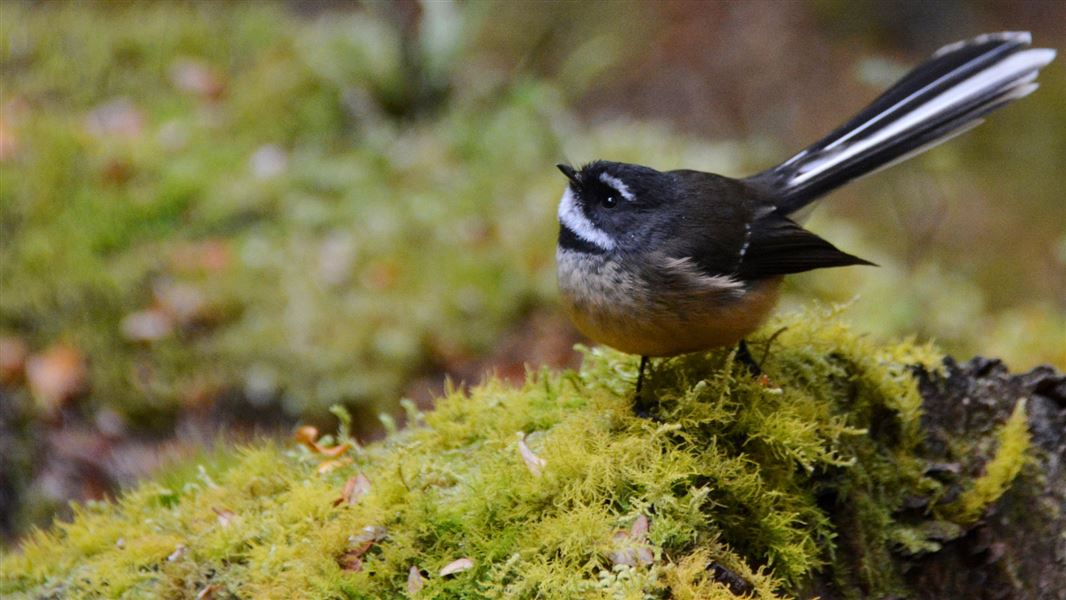
Introduction
Known for its dawn chorus, the New Zealand bush at one time pulsed with the sound of native birds.Find out about the forest and mountain birds of New Zealand, and what we are doing to protect and restore these native bird populations.

Bellbird/korimako
The melodious bellbird is still widespread but mammalian predators keep their numbers low.

Karure / Kakaruia / Chatham Island black robin
The recovery of the Chatham Islands black robin from the brink of extinction is an internationally renowned conservation success story.

Brown kiwi
Brown kiwi live in the North Island. There are four distinct forms, including the Northland brown kiwi.
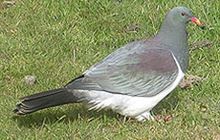
Chatham Island pigeon/parea
Although similar in appearance to the New Zealand pigeon, the Chatham Island pigeon is about 20% heavier, making it one of the world's heaviest pigeons.

Fantail/pīwakawaka
Known for its friendly ‘cheet cheet’ call and energetic flying antics, the fantail is one of the most common and widely distributed native birds on the New Zealand mainland.

Grey warbler/riroriro
The grey warbler is a relatively inconspicuous grey bird that flits about the canopy of the forest but its call permeates the forest and takes the edge off a hard uphill slog for any attentive tramper.

Hihi/stitchbird
Hihi/stitchbird is a medium-sized forest species that is one of New Zealand’s rarest birds.

Kākā
The kākā is a large parrot belonging to the nestorinae family, a group that includes the kea and the extinct Norfolk Island kākā.
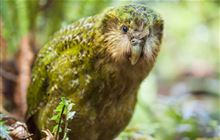
Kākāpō
The kākāpō is a nocturnal, flightless parrot. And its strangeness doesn't end there. It's critically endangered and one of New Zealand’s unique treasures.

Kea
The endangered kea is one of the most intelligent birds in the world. This unique problem-solving parrot was crowned Bird of the Year in 2017.
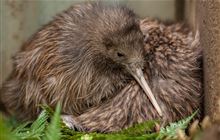
Kiwi
The kiwi is a unique and curious bird: it cannot fly, has loose, hair-like feathers, strong legs and no tail. Learn more about the kiwi, the national icon of New Zealand and unofficial national emblem.

Kōkako
The kōkako belongs to the endemic New Zealand wattlebirds, an ancient family of birds which includes the North and South Island saddleback and the extinct huia.

Morepork/ruru
The native morepork is known for its haunting, melancholic call. This sound gives it the Māori name 'ruru'.

North Island robin/toutouwai
The North Island robin, also known as toutouwai, is a friendly and trusting bird and is found in both native and exotic forests.

New Zealand falcon/kārearea
Capable of flying at speeds up to 200 km/h and catching prey larger than itself, the New Zealand falcon is one of our most spectacular birds.

New Zealand parakeet/kākāriki
Kākāriki, meaning ‘small green parrot’ in Māori, are beautiful forest birds. They feed on berries, seeds, fruit and insects, and generally nest in holes in trees.
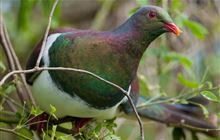
New Zealand pigeon / kererū / kūkū / kūkupa
The kererū is a large bird with iridescent green and bronze feathers on its head and a smart white vest. The noisy beat of its wings is a distinctive sound in our forests.

Rock wren/tuke
A small and reclusive bird, rock wrens are restricted to pockets of the South Island’s high country.

Saddleback/tīeke
The saddleback or tīeke belongs to New Zealand's unique wattlebird family, an ancient group which includes the endangered kōkako and the extinct huia.

Silvereye or wax-eye/tauhou
The silvereye/tauhou – also known as the wax-eye, or sometimes white eye – is a small and friendly olive green forest bird with white rings around its eyes.
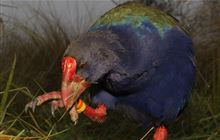
Takahē
The flightless takahē is a unique bird, a conservation icon and a survivor.

Tomtit/miromiro
The New Zealand tomtit looks similar to a robin. They are a small bird with a large head, a short bill and tail, and live in forest and scrub.
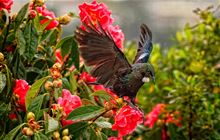
Tūī
Tūī are unique to New Zealand and belong to the honeyeater family, which means they feed mainly on nectar from flowers of native plants.

Weka
The weka is a large, brown flightless bird that has a famously feisty and curious personality.

Whitehead/pōpokotea
The whitehead/pōpokotea has a series of clear tuneful calls that fill the forest with a pleasant cacophony of sound when they appear in flocks high in the canopy of the forest.
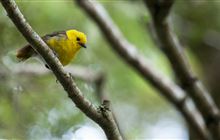
Yellowhead/mohua
The yellowhead/mohua is a small, insect eating bird which lives only in the forests of New Zealand's South Island and Stewart Island.